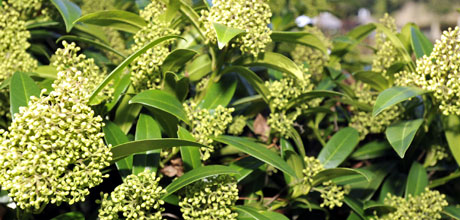Plants for Fragrance
This article was first published on 20 Jun 2012.

Citriodora
Everyone has different taste when it comes to fragrance. In the Theme Borders adjacent to Great King Street, the collection of ‘Plants for Fragrance' has a variety of smells to suit all noses.
Many of the plants in this border have fragrant flowers, but at this time of year, the focus changes to fragrant foliage.
Lemon verbena, Aloysia citriodora gives off a powerful lemon scent when the leaves are brushed or crushed. It is a heady, invigorating scent. The leaves are used to make herbal infusions and can also be added to food to provide a lemony flavour.
The aromatic foliage of Skimmia emits an old-fashioned spicy scent. All four Skimmia species have fragrant flowers and foliage.
How it Works
Some plants contain aroma compounds which are chemicals with scent. The aroma happens when the compound is volatile enough to vaporize and be carried to the olfactory system in your upper nose, arousing your sense of smell.
These aroma compounds may be produced by plants to attract pollinators or as a protection from herbivores.
Take a stroll along the ‘Plants for Fragrance’ border and be inspired by the aromatic menthol of New Zealand native Leionema nudum, the citrus of Mexican orange blossom, Choisya ternata, or the intensity of the Australian mint bush, Prostanthera cuneata.
To best appreciate the fragrant foliage of plants, site them near paths or seats so that when you contact or bruise the foliage the perfume is released into the surrounding air.
Marianne Groothuis is the Camellia and Theme Borders plant collection curator.


